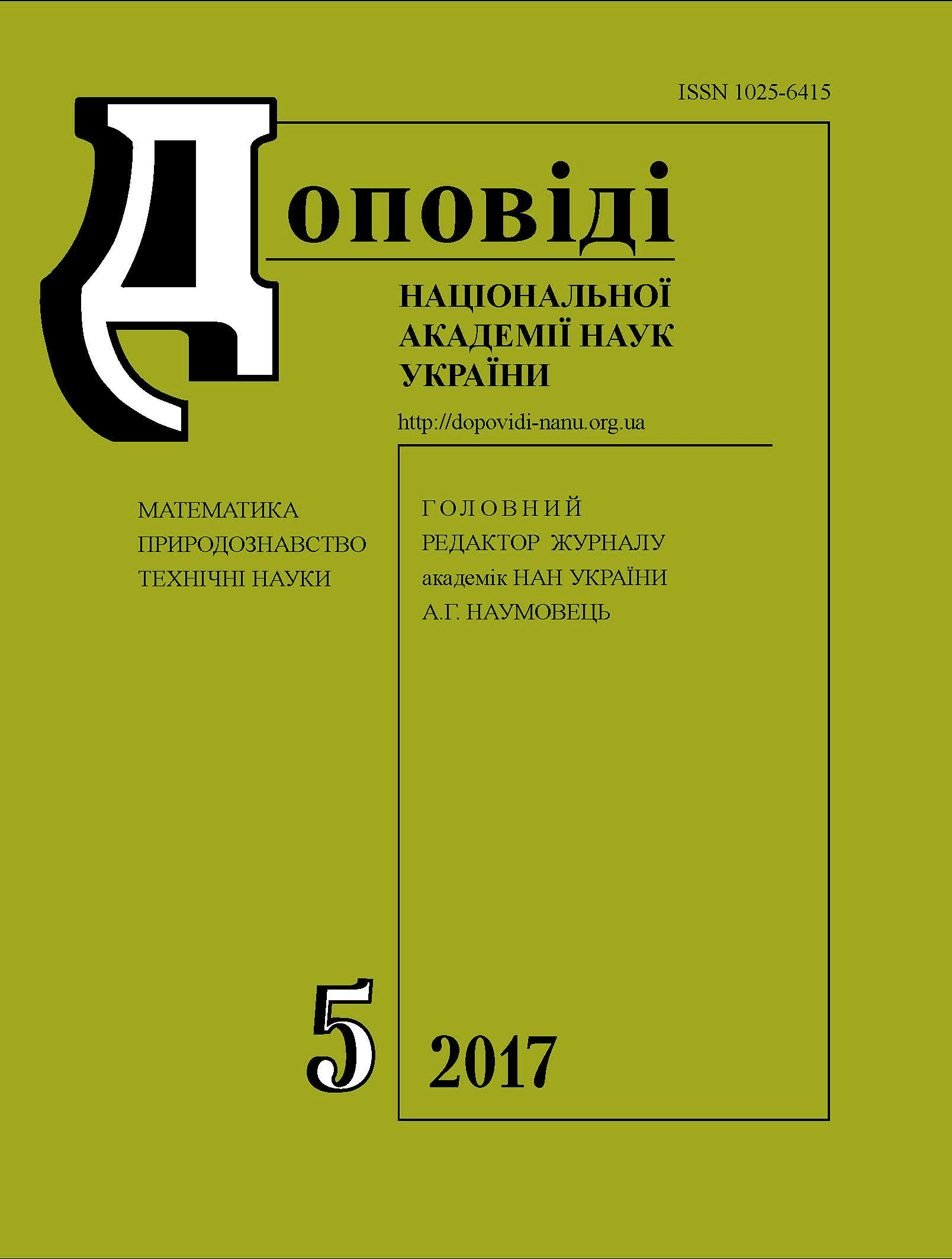Modulatory effects of sodium glutamate on functions of rat's circulating phagocytic cells in vivo and in vitro
DOI:
https://doi.org/10.15407/dopovidi2017.05.089Keywords:
circulating granulocytes, circulating monocytes, obesity, phagocytosis activity, reactive oxygen species, sodium glutamateAbstract
The functional state and metabolic patterns of peripheral blood phagocytes from adult male rats, which were injected with sodium glutamate a the dose of 20 mg/animal during the early postnatal period, are inves tigated. For the characteristic of phagocyte functions, their oxidative metabolism and phagocytic activity are analyzed by flow cytometry. The animals treated with sodium glutamate developed obesity in adulthood. The obesity was associated with the pro-inflammatory metabolic profile of circulating granulocytes, as eviden ced by increased oxidative metabolism along with decreased phagocytic activity of these cells. The treatment of peripheral blood phagocytes from adult intact rats with sodium glutamate at concentrations of 20, 2.00, 0.20 and 0.02 mg/ml in vitro caused their antiinflammatory metabolic changes.
Downloads
References
Savcheniuk, O. A., Virchenko, O. V., Falalyeyeva, T. M., Beregova, T. V., Babenko, L. P., Lazarenko, L. M., Demchenko, O. M., Bubnov, R. V. & Spivak, M. Y. (2014). The efficacy of probiotics for monosodium glutamateinduced obesity: dietology concerns and opportunities for prevention. EPMA J., 5, No 1, pp. 2. https://doi.org/10.1186/1878-5085-5-2
Roman-Ramos, R., Almanza-Perez, J. C., Garcia-Macedo, R., Blancas-Flores, G., Fortis-Barrera, A., Jasso, E. I., Garcia-Lorenzana, M., Campos-Sepulveda, A. E., Cruz, M. & Alarcon-Aguilar, F. J. (2011). Monosodium glutamate neonatal intoxication associated with obesity in adult stage is characterized by chronic inflammation and increased mRNA expression of peroxisome proliferator-activated receptors in mice. Basic Clin. Pharmacol. Toxicol., 108, No. 6, pp. 406-413. https://doi.org/10.1111/j.1742-7843.2011.00671.x
Fantuzzi, G. (2005). Adipose tissue, adipokines, and inflammation. J. Allergy Clin. Immunol., 115, No. 5, pp. 911-919. https://doi.org/10.1016/j.jaci.2005.02.023
Dixit, V. D. (2008). Adipose-immune interactions during obesity and caloric restriction: reciprocal mechanisms regulating immunity and health span. J. Leukoc. Biol., 84, No. 4, pp. 882-892. https://doi.org/10.1189/jlb.0108028
Chawla, A., Nguyen, K. D. & Goh, Y. P. (2011). Macrophage-mediated inflammation in metabolic disease. Nat. Rev. Immunol., 11, No. 11, pp. 38-49. https://doi.org/10.1038/nri3071
Sell, H., Habich, C. & Eckel, J. (2012). Adaptive immunity in obesity and insulin resistance. Nat. Rev. Endocrinol., 8, No. 12, pp. 709-716. https://doi.org/10.1038/nrendo.2012.114
Nishimura, S., Manabe, I., Takaki, S., Nagasaki, M., Otsu, M., Yamashita, H., Sugita, J., Yoshimura, K., Eto, K., Komuro, I., Kadowaki, T. & Nagai, R. (2013). Adipose natural regulatory B cells negatively control adipose tissue inflammation. Cell Metab., S1550-4131(13)00386-0 https://doi.org/10.1016/j.cmet.2013.09.017
Fischer-Posovszky, P., Wang, Q. A., Asterholm, I. W., Rutkowski, J. M. & Scherer, P. E. (2011). Targeted deletion of adipocytes by apoptosis leads to adipose tissue recruitment of alternatively activated M2 macrophages. Endocrinology, 152, No. 8, pp. 3074-3081. https://doi.org/10.1210/en.2011-1031
Kawanishi, N., Niihara, H., Mizokami, T., Yada, K. &, Suzuki, K. (2015). Exercise training attenuates neutrophil infiltration and elastase expression in adipose tissue of high-fat-diet-induced obese mice. Physiol. Rep., 3, No. 9, e12534. https://doi.org/10.14814/phy2.12534
Lumeng, C. N., Deyoung, S. M., Bodzin, J. L. & Saltiel, A. R. (2007). Increased inflammatory properties of adipose tissue macrophages recruited during diet-induced obesity. Diabetes, 56, No. 1, pp. 16-23. https://doi.org/10.2337/db06-1076
Boldyrev, A. A., Kazey, V. I., Leinsoo, T. A., Mashkina, A. P., Tyulina, O. V., Johnson, P., Tuneva, J. O., Chittur, S. & Carpenter, D. O. (2004). Rodent lymphocytes express functionally active glutamate receptors. Biochem. Biophys. Res. Commun., 324, No. 1, pp. 133-139. https://doi.org/10.1016/j.bbrc.2004.09.019
Skivka, L.M., Fedorchuk, O.G., Rudyk, M.P., Pozur, V.V., Khranovska, N.M., Grom, M. Y. & Nowicky, J. W. (2013). Antineoplastic drug NSC631570 modulates functions of hypoxic macrophages. Tsitol. Genet., 47, No. 5, pp. 70-82. https://doi.org/10.3103/s0095452713050095
Shapiro, H., Lutaty, A. & Ariel, A. (2011). Macrophages, meta-inflammation, and immuno-metabolism. Scientific World J., 11, pp. 2509-2529. https://doi.org/10.1100/2011/397971
Beyrau, M., Bodkin, J. V. & Nourshargh, S. (2012). Neutrophil heterogeneity in health and disease: a revitalized avenue in inflammation and immunity. Open Biol., 2, No. 11, 120134. https://doi.org/10.1098/rsob.120134
Pozur, V.V., Rudyk, M.P., Serhiychuk, T.M., Svyatetska, V.M., Akulenko, I.V., Yankovskyy, D.S., Dyment, G.S., Beregova, T.V. & Ostapchenko, L.I. (2016). The effect of multiprobiotic "symbiter acidophilus" on the intestinal microflora and functional activity of peritoneal macrophages in rats with glutamate-induced obesity. Studia Biologica, 10, No. 11, pp. 61-74 (in Ukrainian).
Downloads
Published
How to Cite
Issue
Section
License
Copyright (c) 2024 Reports of the National Academy of Sciences of Ukraine

This work is licensed under a Creative Commons Attribution-NonCommercial 4.0 International License.



